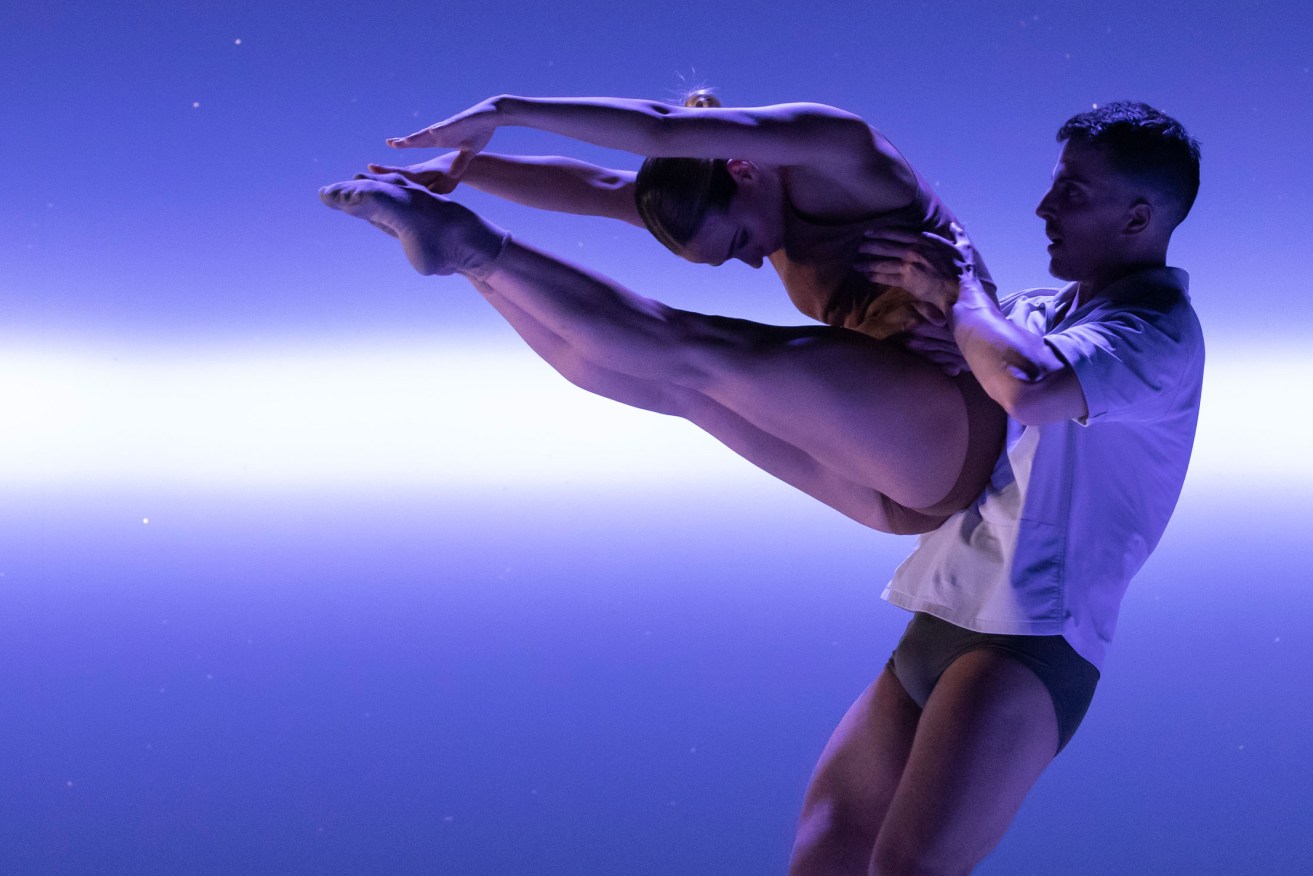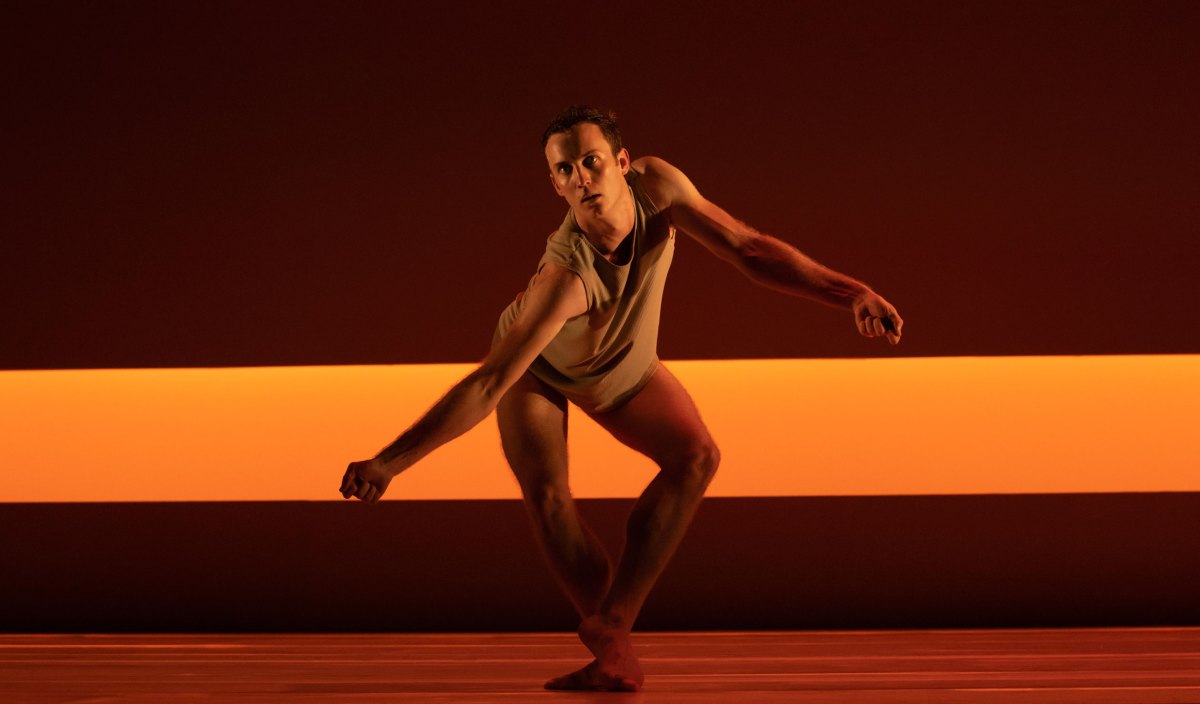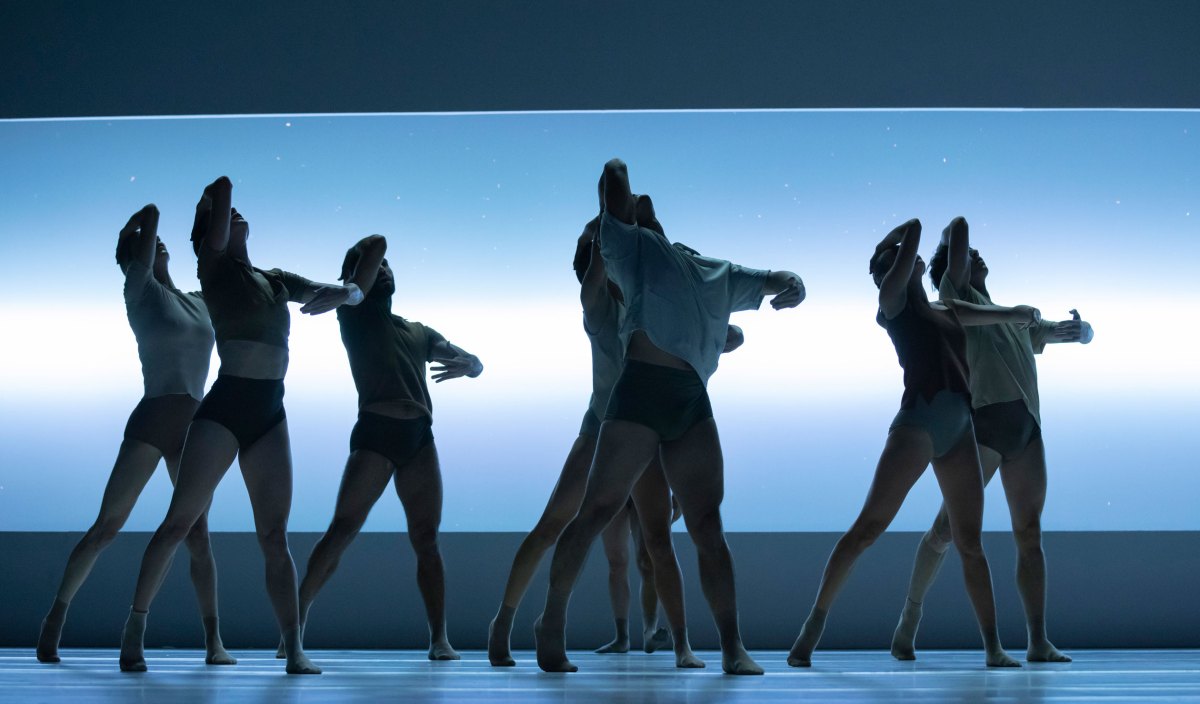Festival review: Impermanence
The fragility of existence is laid bare in Sydney Dance Company’s Impermanence, a masterful display of music and movement held in perfect symbiosis.


Sydney Dance Company's Impermanence seeks to reflect 'the ephemeral nature of structures, relationships, life and our planet'. Photo: Pedro Greig
The auditorium is hushed, the stage hidden behind a thick velvet curtain. As the curtain rises, the melancholic tones of a single violin slide out across the spare set (David Fleischer), dimly lit by a thin strip of white light against a grey backdrop (Damien Cooper). Four musicians (Australian String Quartet players Dale Barltrop, Francesca Hiew, Christopher Cartlidge and Michael Dahlenburg) are seated at the back of the stage, their instruments gently guiding an ensemble of dancers who move independently, as if in a crowded street, their steps halting, staccato.
Some are walking backwards. One lurches forward, creating a domino effect of additional stumbles. One runs from the stage and another follows. But as we watch, their movements almost imperceptibly become more fluid, limbs reaching, bodies arcing, descending into prostrate positions on the stage, undulating like a calm sea bathed in a twilight glow, then rising again in tidal motion, sitting up, standing, reaching, vertical, finally returning to their original halting walk.
So begins Impermanence, a performance that choreographer Rafael Bonachela describes in his introductory speech as “reflecting the ephemeral nature of structures, relationships, life and our planet”.
This particular iteration of Impermanence has been a long time in the making. Sydney Dance Company was ready to roll with the show in early 2020, just as COVID-19 closed all the theatres. With restrictions on gatherings forcing the dancers to practise together via Zoom, finessing the performance was never going to be easy, but Bonachela and composer Bryce Dessner rose to the challenge, using the extra time to expand the original eight movements to 12.
The result is a work that is mesmerising, fluid and fiercely embedded in the now. Dessner’s extraordinary score shifts from ethnic to ethereal, from tender melodic phrases that waterfall over each other to choppy bowing that frizzles with frantic energy.

Impermanence: Bathed in orange light, dancers spin like drifting embers. Photo: Pedro Greig
The dancers’ movements are a complex combination of classical ballet, contemporary dance, hip-hop, mime and the Tarantella, all executed with consummate, awe-inspiring skill. Their bodies form intricate structures that are held briefly before dissipating into new movement or shape. They come together in intimate duets that drift into solos or build into larger ensembles. Bathed in orange light, they spin like drifting embers. Plunged into liquid purple, they flow like oceans.
Aleisa Jelbart’s simple costumes in neutral tones of earth and sea allow the dancers to retain individuality while remaining part of a whole. Dressing the quartet in similar shades means that they visually blend with the corps. It’s a sense that is compounded when the backdrop flares into light and the musicians are silhouetted alongside the dancers, the movement of their bows becoming part of the dance.
Similarly, Bonachela’s masterful choreography has the dancers ebbing and flowing in perfect symbiosis with the music, and it’s this impeccable fusion of sound and movement that is the driving force behind Impermanence. The audience are entranced by the repetitive variations of cambré, balloté, plier and étendre, as the dancers bend the music into a language that is understood on a visceral rather than intellectual level.
This close bond between corps and quartet is the result of in-depth collaboration, from concept to performance, between Bonachela, the Australian String Quartet and the much-lauded Dessner (who, as well as being lead guitarist of acclaimed US band The National, has written the scores for films such as The Revenant and The Kitchen). Dessner’s friendship with Anohni (founder of Antony and the Johnsons) also led to an exquisite finalé for the performance.

The performance is firmly embedded in the now. Photo: Pedro Greig
The last sequence is a poignant solo by a male dancer who embodies the mournful, balladic vocals of Anohni’s Another World in curious, shape-shifting movements that are at once familiar and unearthly. It’s the perfect summation of all that’s gone before, an expression of both curiosity and loss that shimmers with bittersweet beauty and shines with a fragile ray of hope.
As the final notes fade away, we are left with a sense of both bereavement and enlightenment. As Paulo Coelho put it: “Anyone who has lost something they thought was theirs forever finally comes to realise that nothing really belongs to them.” Impermanence lets us feel this in our blood and in our bones. We leave with a better understanding of the intrinsic beauty of every individual moment.
Impermanence is being presented by Sydney Dance Company and the Australian String Quartet at the Festival Theatre, with final performances today.
Read more Adelaide Festival stories and reviews here.




